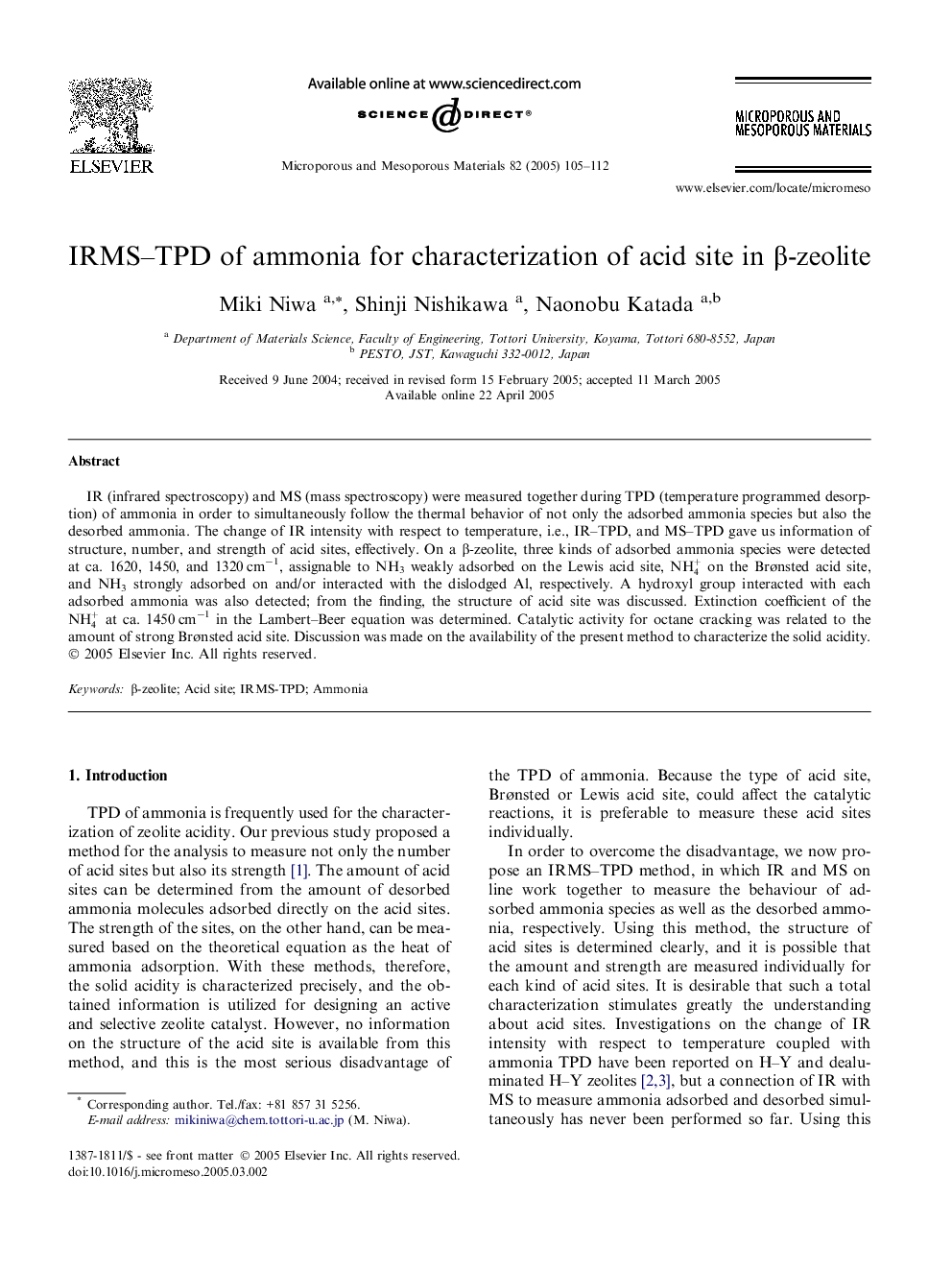| Article ID | Journal | Published Year | Pages | File Type |
|---|---|---|---|---|
| 9617677 | Microporous and Mesoporous Materials | 2005 | 8 Pages |
Abstract
IR (infrared spectroscopy) and MS (mass spectroscopy) were measured together during TPD (temperature programmed desorption) of ammonia in order to simultaneously follow the thermal behavior of not only the adsorbed ammonia species but also the desorbed ammonia. The change of IR intensity with respect to temperature, i.e., IR-TPD, and MS-TPD gave us information of structure, number, and strength of acid sites, effectively. On a β-zeolite, three kinds of adsorbed ammonia species were detected at ca. 1620, 1450, and 1320 cmâ1, assignable to NH3 weakly adsorbed on the Lewis acid site, NH4+ on the Brønsted acid site, and NH3 strongly adsorbed on and/or interacted with the dislodged Al, respectively. A hydroxyl group interacted with each adsorbed ammonia was also detected; from the finding, the structure of acid site was discussed. Extinction coefficient of the NH4+ at ca. 1450 cmâ1 in the Lambert-Beer equation was determined. Catalytic activity for octane cracking was related to the amount of strong Brønsted acid site. Discussion was made on the availability of the present method to characterize the solid acidity.
Related Topics
Physical Sciences and Engineering
Chemical Engineering
Catalysis
Authors
Miki Niwa, Shinji Nishikawa, Naonobu Katada,
